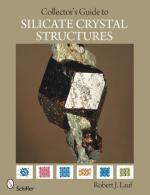|
This section contains 197 words (approx. 1 page at 300 words per page) |
Igneous rocks are classified by geologists using various schemes. One of the several schemes based on chemical composition divides igneous rocks into four categories according to silica (silicon dioxide, SiO2) content: (1) Rocks containing more than 66% silica are silicic. (2) Rocks containing 52–66% silica are classified as intermediate. (3) Rocks containing 45–52% silica are mafic. (4) Rocks containing less than 45% silica are ultramafic.
Because silicon is less dense than the elements that often replace it in rock—especially iron and magnesium—silicic rocks are less dense than mafic rocks and tend to rise above them. The continents float on the mantle because they consist primarily of silicic rocks. Mafic and ultramafic rocks predominate in the mantle and oceanic crust.
All rocks high in quartz, which is simply crystalline silica, are silicic. Feldspar is a silicic mineral, and is a major component of many igneous rocks. Some common silicic rocks are granite, granodiorite, and rhyolite.
The terms silicic and siliceous (suh-LISH-us) are used synonymously by some geologists; others reserve silicic for high-silica igneous rocks, siliceous for high-silica sedimentary rocks. The term acid is sometimes used as a synonym for silicic and the terms basic and ferromagnesian as synonyms for mafic.
See Also
|
This section contains 197 words (approx. 1 page at 300 words per page) |


